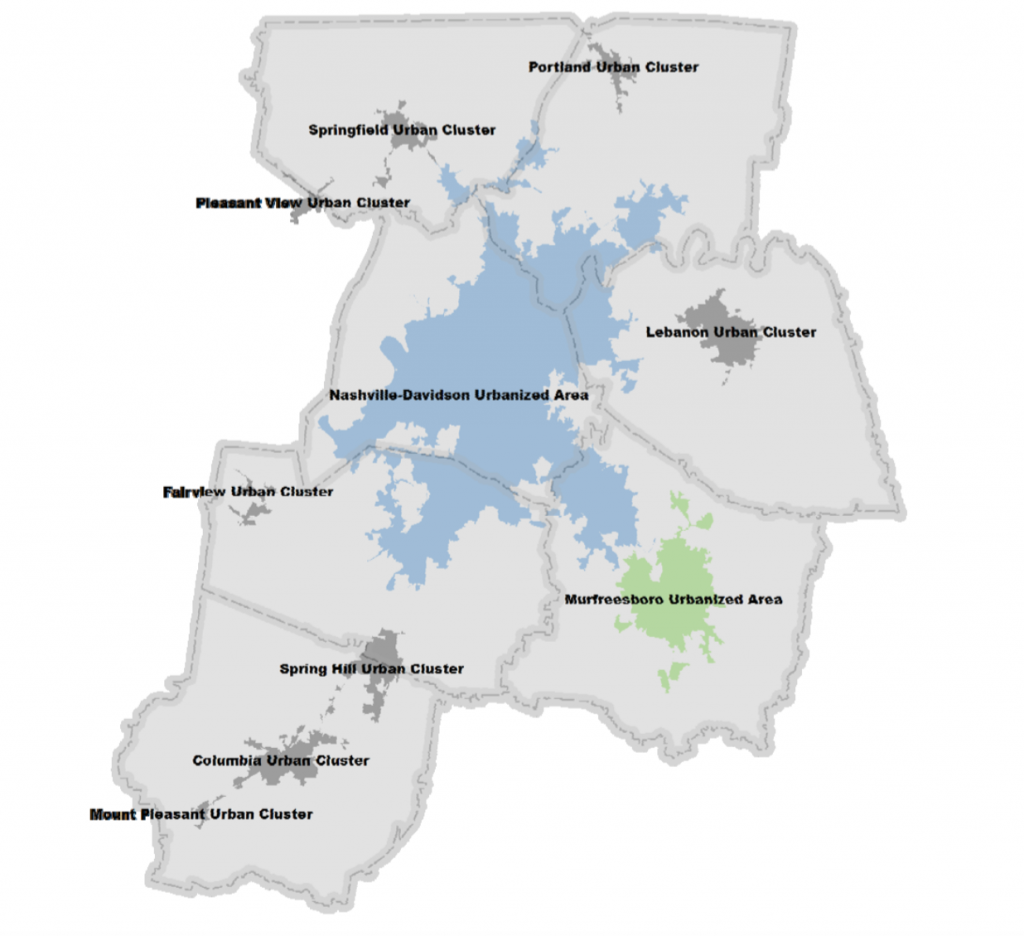Fresh off the defeat of Nashville’s transit referendum, a Republican gubernatorial candidate is proposing a major highway expansion that would complete the I-480 loop around the city to the north and double-deck I-65, I-40, and I-24 through downtown.
Nashville’s traffic is getting worse. But it’s first worth asking whether it has too few freeways. I have a database from the Texas Transportation Institute that can help shed light on this. It’s five or so years old, so updated data would need to be pulled, but as of 2011, Nashville did not appear to be short on freeways.
In that year, Nashville ranked 7th in the country among major metro areas in freeway lane miles per capita. That’s more than peer cities like Indianapolis and Columbus, though less than Kansas City. It also ranked 19th in arterial lane miles per capita.
But while it appears to rank as having among the biggest freeway networks relative to its size, Nashville already had a lot of traffic too. It ranked 13th in the country in freeway vehicle miles traveled per capita, and 18th in congestion as measured using the travel time index.
This foots to my observations. That major radial routes in and out of Nashville are already very wide – four to five lanes each direction in many cases. That’s wider than peer city interstates. Yet they are full of cars. Why is that?
I would suggest looking again at the architecture of Nashville’s freeway network and its development pattern. Nashville lacks a traditional beltway, instead having a series of branching interconnections of roads that forms a sort of inner belt but with lots of merging and diverging traffic that drives congestion.
I-840 is a partial beltway to the south of the city, but it’s too far out to be useful. Based on the proposed routing of the northern section, its average distance from downtown would be about 30 miles. This contrasts with 8-9 miles for Indy’s I-465 and Columbus’ I-270. Atlanta’s I-285 averages around 10 miles from downtown. Yes, cities like Houston have outer belts that might map to Nashville’s I-840, but they closer rings as well as well as being much larger.
A commenter named Jake also suggested that completing I-840 to the north would be geologically difficult:
A full circle freeway cannot be built around Nashville for technical reasons. The city is situated on a geologic anomaly called the “Nashville Dome” that is comprised of super-hard rock that is super-expensive to blast through. The area northwest of downtown is especially rugged and blasting a 4-lane freeway from I-40 north to I-24 and I-65 is cost prohibitive.
The rock is the reason why the city has sprawled to the north, east, and south, but not to the west. This has pushed the equivalent amount of growth further in those directions than it would have otherwise, not unlike a waterfront city.
Looking at the urbanized area map of Nashville, we do see surprisingly unevenly spread development for an interior city.

Image via Nashville long range transportation plan
Nashville also seems to have the Atlanta problem of few “crosstown” arterials. There are some like Old Hickory Road, but compared to Midwestern cities with their township grid systems, it’s not as easy to make trips not involving the radial routes.
I do believe Nashville, as a rapidly growing city, needs to invest into its roadway network. But the fundamental architecture of its network relative to development and travel demand patterns needs to be reevaluated. Charlotte built a traditional beltway at a fairly late date. The ship may have sailed for that with Nashville (though it has a partial one to the north in TN 155), but thinking about the kind of network Nashville needs is important. Simply widening the existing interstate system that is already very wide may not do the trick.
from Aaron M. Renn
http://www.urbanophile.com/2018/05/10/double-decking-interstates-is-not-the-answer-for-nashville-traffic-woes/
No comments:
Post a Comment